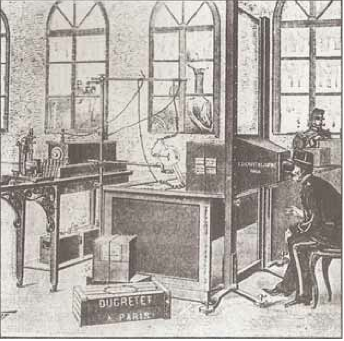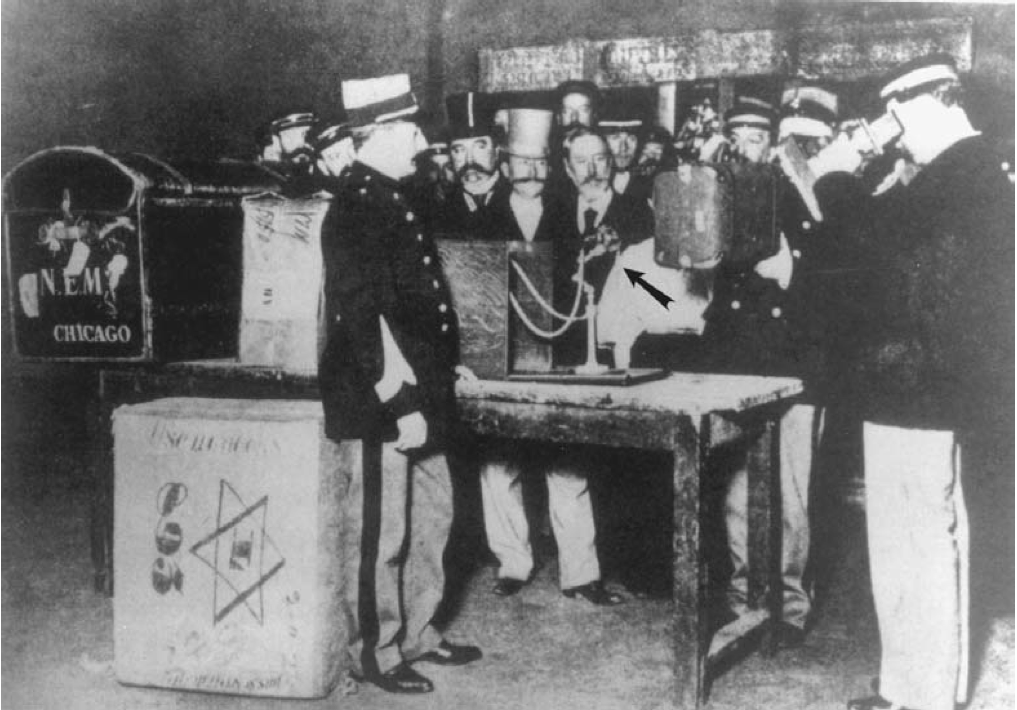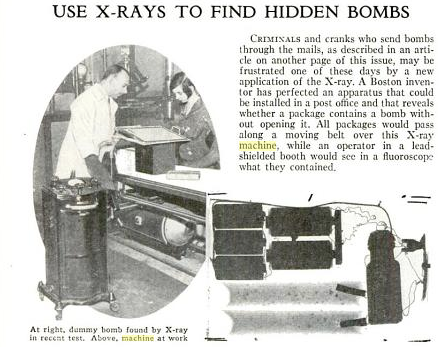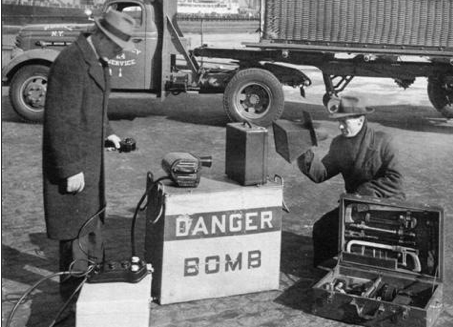The use of emerging technology to counter IEDs appears to be a theme of the moment. But like many of the themes in countering IEDs, this is another that is not new. In 1895 Rontgen developed our understanding of what are now called X-rays and made public his findings on 28 December 1895. This technology was seized upon with alacrity for a number of purposes, including medical applications and non-destructive testing. There was much discussion about the use of “Rontgen images” in court as forensic evidence. But one of the other applications, implemented in early 1896 in Paris, barely more than weeks after the publication of Rontgen’s studies, was the use of both portable and permanent systems to x-ray suspect packages and other contraband. At that time there was a significant threat of IEDs used by anarchists, revolutionaries and criminals.
I have posted before some of the x-ray images of IEDs at the time, here. But now I have found some images of the systems themselves.
The Paris Bureau de Post seems to have had a permanent system emplaced in an office in Paris for examining suspicious items of post by about June 1896, image below:

And the Bureau de Doaunes appeared to have two portable systems operating, one at Gard du Nord (below) at about the same time. Thus, within just a few months the technology was being commercially exploited in C-IED roles.

I think nowadays you wouldn’t get quite so many people crowded around the operation. By comparison modern systems such as AS&Es excellent MiniZ technology still uses the X-ray concept (but in the much safer backscatter application) – but it’s doing exactly the same job as the systems above, it’s just a lot smaller and more portable. Take a look at the guy on the right in the image above and the guy on the right in the video below – spookily similar!
 Roger Davies
Roger DaviesHere’s two more historical IED x-ray equipments that fit in between the 1896 version and the current day version:
This from 1932:

And this from about 1950 (I think):

It’s amazing how so little changes, looking at these four devices chronologically.
